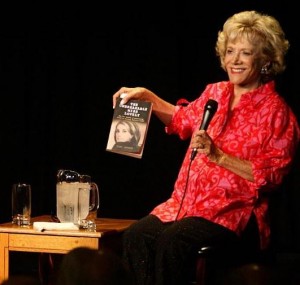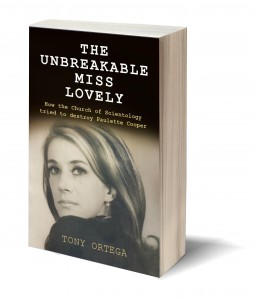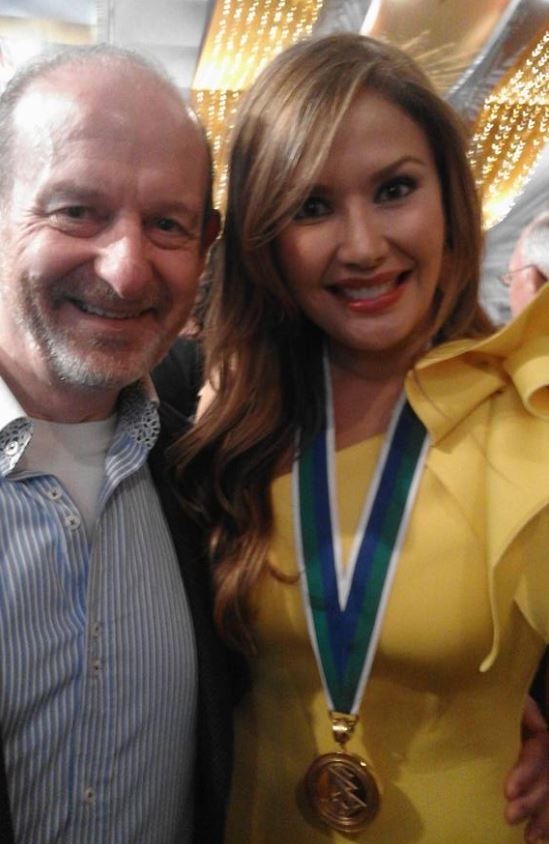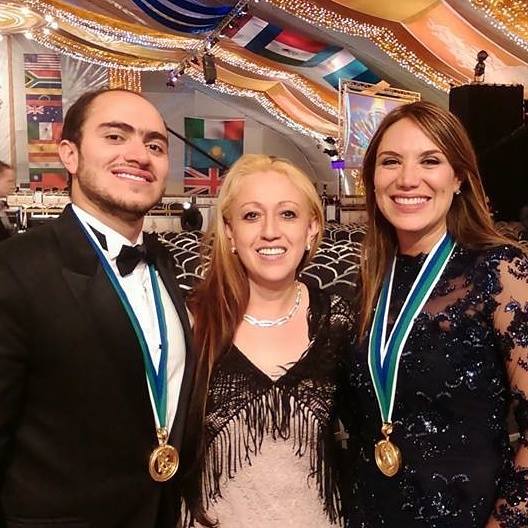 Jon Atack is the author of A Piece of Blue Sky, one of the very best books on L. Ron Hubbard and Scientology. He has a new edition of the book for sale, and for more than three years he’s been helping us sift through the legends, myths, and contested facts about Scientology that tend to get hashed and rehashed in books, articles, and especially on the Internet.
Jon Atack is the author of A Piece of Blue Sky, one of the very best books on L. Ron Hubbard and Scientology. He has a new edition of the book for sale, and for more than three years he’s been helping us sift through the legends, myths, and contested facts about Scientology that tend to get hashed and rehashed in books, articles, and especially on the Internet.
I never really considered Scientology a religion. I accept that if others want to, they can, but I agree with Professor Hugh Urban: “If anything, Scientology is a self-conscious attempt to make a religion, that is, a concerted effort to use explicitly religious sorts of discourse to describe, defend, define and redefine itself.” (The Church of Scientology: A History of a New Religion, p.211).
Initially, religious status was a way of avoiding any further lawsuits from the American Medical Association for practicing medicine without a license: In the US you can claim to cure cancer (as Hubbard did), as long as it is a religious claim.
Helen O’Brien furnished me with the letter Hubbard wrote to her on April 10, 1953, when she headed his organization, where he talks about the financial profits available from the “religion angle.”
A follower from the US told me in about 1976 that he and other staff were all ushered onto the week-long Minister’s Course, to avoid being sent to Vietnam. A similar pretense of religion had happened in the early 1960s, when the Australian state of Victoria introduced its draconian ban of Scientology (for more information, see Steve Cannane’s excellent new book, Fair Game).
I didn’t see Scientology as religion, but as a set of techniques for self-improvement and the healthy administration of groups (I’ve changed my mind on both of those scores – it is a set of techniques to create subservience and a way of trapping people in a totalist cult).
In the late 1980s, I constructed an argument that was used several times in court to show that Scientology is a “monolithic corporation” hiding behind a “corporate veil.” The hundreds of listed Scientology corporations are, in fact, all under the control of David Miscavige, who keeps signed but undated resignations from the supposed officials of those corporations.
Lawrence Wollersheim came near to the end of his heroic 20-year battle, only to find that the Church of Scientology of California (the “mother church”) had only thousands left in its bank accounts, so my argument was vital to his judgment. This argument was also used successfully by Bent Corydon.
Along the way, I had to read a slew of corporate filings (later well documented by Denise Brennan, who was instrumental in creating this particular shell game). One filing in particular caught my attention: The Church of Spiritual Technology, which acquired $500 million of the $648 million left in Hubbard’s will (‘The work was free; keep it so’ as he said).
My first foray into Scientology’s corporate structure was during the original David Mayo case. His lawyers had racked up a bill of almost $3 million, and they wanted to persuade the court to award them costs.
I obtained documents filed by the Church of Spiritual Technology (CST) in its attempt to obtain tax exemption. I told the lawyers to ask for these documents from whichever of the corporations were suing David. It worked like a dream. I even received a thousand dollar fee.
I continued to monitor CST, and in 1992 obtained a judgment in Church of Spiritual Technology v. United States of 29 June that includes the following statement: “LRH died in 1986, but his writings and other recorded words are still considered to be scripture by adherents of Scientology.”
The court denied the application – it would wait for David Miscavige and Marty Rathbun to work their evil magic the following year in order to make the IRS roll over and play dead – but the statement struck me, because of that word “scripture.”
Hubbard had already hijacked the word “church” – formerly a Christian organization – and now his followers were after another Christian term. “Scripture” means “Holy Writ; the Bible” in its original meaning (courtesy of the Oxford Dictionary).
In common parlance, however, scripture means “truth,” which is why I have so often caviled at the term when used by Scientologists. In Scientology, we have the notion that everything Hubbard said is true: It is scripture. So his writings about vases, the Saint Hill car park, and the tooth-destroying “barley formula” for babies are all irrevocable truth.
This raises many conflicts, including Hubbard’s contradictory statements about his own life. Listen to the 23 September 1950 lecture “Introduction to Dianetics” and compare it to the version in Mission Into Time, for instance – but no two autobiographies are the same. More importantly, this destroys any notion that Scientology is scientific – because science cannot rely upon the fiat of one autocratic individual. It must be open to revision as new investigations are made.
Hubbard wanted to have his cake and eat it, too: Scientology is a religion and a science, according to his “scripture.” Instead what we are presented with is what Robert Jay Lifton called sacred science: “The totalist milieu maintains an aura of sacredness around its basic dogma, holding it out as an ultimate moral vision for the ordering of human existence. This sacredness is evident in the prohibition…against the questioning of basic assumptions, and in the reverence which is demanded for the originators of the Word, the present bearers of the Word, and the Word itself. While thus transcending ordinary concerns of logic, however, the milieu at the same time makes an exaggerated claim of airtight logic, of absolute ‘scientific’ precision. Thus the ultimate moral vision becomes an ultimate science; and the man who dares to criticize it, or to harbour even unspoken alternative ideas, becomes not only immoral and irreverent, but also ‘unscientific.’ In this way, the philosopher kings of modern ideological totalism reinforce their authority by claiming to share in the rich and respected heritage of natural science.”
So, to repeat the assertion made by Alan Upward, who created the word “Scientology” in 1907, “Is it science or is it scientology?”
— Jon Atack
——————–
Bonus items from our tipsters
Some images from last night’s big IAS annual gala in East Grinstead, England have started coming in.
——————–
 ‘The Unbreakable Miss Lovely’ audiobook now on sale
‘The Unbreakable Miss Lovely’ audiobook now on sale
Audible.com has released the audiobook version of The Unbreakable Miss Lovely: How the Church of Scientology tried to destroy Paulette Cooper and you can get the book for free if you’re signing up at Audible for the first time!
Read by the author (that’s us), the book tells the incredible tale of a journalist who was among the first to expose Scientology’s controversies, and nearly paid for it with her life. Go to Audible’s website for more details — [US version] [UK version]
To support the Audible launch, Paulette Cooper joined us for an “Ask Me Anything” session at Reddit on September 29, which covered a lot of topics about the book and about this website.
——————–
 Posted by Tony Ortega on October 8, 2016 at 07:00
Posted by Tony Ortega on October 8, 2016 at 07:00
E-mail tips and story ideas to tonyo94 AT gmail DOT com or follow us on Twitter. We post behind-the-scenes updates at our Facebook author page. After every new story we send out an alert to our e-mail list and our FB page.
Our book, The Unbreakable Miss Lovely: How the Church of Scientology tried to destroy Paulette Cooper, is on sale at Amazon in paperback, Kindle, and audiobook versions. We’ve posted photographs of Paulette and scenes from her life at a separate location. Reader Sookie put together a complete index. More information about the book, and our 2015 book tour, can also be found at the book’s dedicated page.
Learn about Scientology with our numerous series with experts…
BLOGGING DIANETICS: We read Scientology’s founding text cover to cover with the help of L.A. attorney and former church member Vance Woodward
UP THE BRIDGE: Claire Headley and Bruce Hines train us as Scientologists
GETTING OUR ETHICS IN: Jefferson Hawkins explains Scientology’s system of justice
SCIENTOLOGY MYTHBUSTING: Historian Jon Atack discusses key Scientology concepts
Other links: Shelly Miscavige, ten years gone | The Lisa McPherson story told in real time | The Cathriona White stories | The Leah Remini ‘Knowledge Reports’ | Hear audio of a Scientology excommunication | Scientology’s little day care of horrors | Whatever happened to Steve Fishman? | Felony charges for Scientology’s drug rehab scam | Why Scientology digs bomb-proof vaults in the desert | PZ Myers reads L. Ron Hubbard’s “A History of Man” | Scientology’s Master Spies | Scientology’s Private Dancer | The mystery of the richest Scientologist and his wayward sons | Scientology’s shocking mistreatment of the mentally ill | Scientology boasts about assistance from Google | The Underground Bunker’s Official Theme Song | The Underground Bunker FAQ
Our Guide to Alex Gibney’s film ‘Going Clear,’ and our pages about its principal figures…
Jason Beghe | Tom DeVocht | Sara Goldberg | Paul Haggis | Mark “Marty” Rathbun | Mike Rinder | Spanky Taylor | Hana Whitfield











